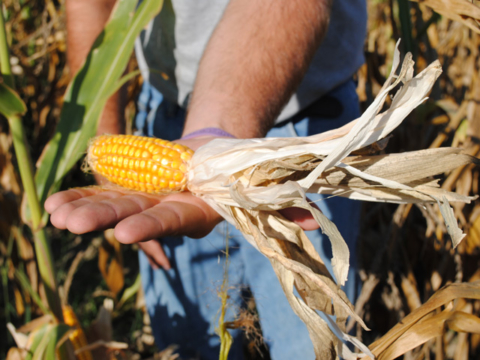Explore our blog featuring articles about farming and irrigation tips and tricks!
Do You Have Ugly Ears? Here’s Why

By: Emily Unglesbee
ROCKVILLE, Md. (DTN) — Don’t be fooled by that handsome stand of corn flying past your windshield.
Delve deep into the field, peel back some husks and the stresses of the season may quickly become visible.
From severe tip-back to stunted ears or empty cobs, many growers are finding the consequences of spring flooding, replanting and drought stress in their crop. For help diagnosing the causes behind abnormal corn ears, we turned to Purdue University corn agronomist Bob Nielsen.
TIP-BACK TROUBLE
As one of the most common ear complaints, tip-back has a broad range of potential causes, Nielsen said. “Any kind of stress that has big impact on photosynthesis can cause tip-back,” he explained.
The silks attached to the base of the corn ear emerge first, and those at the tip, last. That leaves the tip silks (and resulting kernels) especially vulnerable to being discarded from mistimed pollination or a plant lacking the resources to fill them, Nielsen explained.
One of the most likely culprits this year is drought stress, particularly during or after pollination, he said. A large swath of the Midwest, from the Dakotas down across Iowa, Illinois and Indiana, experienced dry or droughty conditions in July and August this year.
Other possibilities are nitrogen deficiency, stemming from flooding in the spring and early summer, or foliar diseases, Nielsen said.
“Both would put a lot of stress on a plant to produce enough carbohydrates to fill those kernels, and the kernels near the tip, which are younger and tend to be more vulnerable to stress, abort more easily,” he said.
SCATTERED KERNELS, ZIPPER EARS AND EMPTY COBS
Harder to diagnose are corn ears with a handful of kernels scattered around the cob, a strip missing down the side (zipper ears) or no kernels at all. They are especially frustrating when neighboring plants have well-developed ears.
Years ago, when rootworm beetle feeding on silks was more prominent, scattered kernels or empty cobs could occur, Nielsen noted. This year, these empty or near-empty ears are more likely “unusual consequences of drought,” he said.
Stay up to date on all T-L news and get alerts on special pricing!


